You are 2 Weeks and 3 Days 263 days to go…
Vital cell divisions are now taking place as the fertilized egg begins its journey toward implantation.
What’s happening inside
When the two nuclei have pooled their genetic material to create
a cell containing its full complement of 46 chromosomes—23 each from
the mother and father—the cell can start dividing, shown here at the
first division creating a two-celled body.
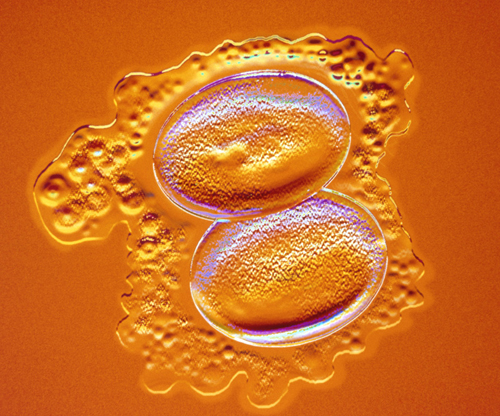
The chromosomes from the sperm and egg
joined over 24 hours ago. It takes around 30 hours for the resulting
zygote to complete its first cell division. The zygote, at only 0.1 mm
in diameter goes on to divide into 16 cells, forming a compact ball.
Cell division is such
that the ball of cells is hardly any larger than the original zygote.
The ball of 16 cells, now known as a “morula” (as it resembles a
mulberry), travels toward the uterus, entering on day three after
fertilization. Every cell within the morula is totipotent, meaning it is
able to form any type of cell. From this point onward the cells will
lose this function as they start to specialize.
… IVF
From eggs to embryos
Egg collection will be scheduled (see image), following the first stage of IVF.
Not all follicles that were stimulated will contain eggs. Two days
after egg retrieval, you will be given progesterone to thicken the
uterus lining. Two to five days after fertilization, the most promising
embryos are chosen to be transferred.
If you’re
under 40, you’ll have one or two embryos transferred. If you’re over 40,
you may have up to three or more transferred. The goal is to achieve a
pregnancy, yet limit the risks of a multiple pregnancy. Any leftover
embryos can be frozen for future treatment cycles. Recent research
suggests that frozen embryos are better than fresh ones—this may be
because only the best embryos are selected for freezing and survive the
freezing and thawing process.
The outcome of IVF depends to a great extent on the woman’s age, but on average each cycle has a 20 percent success rate.

… Doctor
| Q: |
I’ve been doing ovulation tests. I’ve now ovulated so do my
partner and I need to keep having sex to make sure I conceive?
|
| A: |
You can’t be sure that you’ve conceived already, so the usual
advice would be to continue lovemaking. Even if you’ve been tracking
your ovulation by monitoring your temperature or cervical mucus, or by
using an ovulation kit (see Are you ovulating?), you can’t be sure exactly when it occurred. It won’t be possible for you to pinpoint the exact time of ovulation.
Since the fertile
window is several days, you may as well continue having sex for at least
a couple of days after what you think is your most fertile time.
Furthermore, since
sex says “I love you” more strongly than most other means of
communication, it’s good for both you and your partner to stay intimate
at times you’re not trying to conceive.
Remember also
that abstention doesn’t usually have the hoped-for effect of banking up
and improving the quantity and quality of sperm. In fact, the opposite
may happen (see This is Day 13 of your Menstrual Cycle).
|
You are 2 Weeks and 4 Days 262 days to go…
Significant changes
are taking place daily within your uterus and within just 72 hours from
now, the fertilized egg will implant.
What’s happening inside
This is an embryo at the 16-cell stage, when it has changed from
a zygote into a morula. It is in the process of dividing into a hollow
ball of cells—the blastocyst—which will eventually implant in the lining
of the uterus.
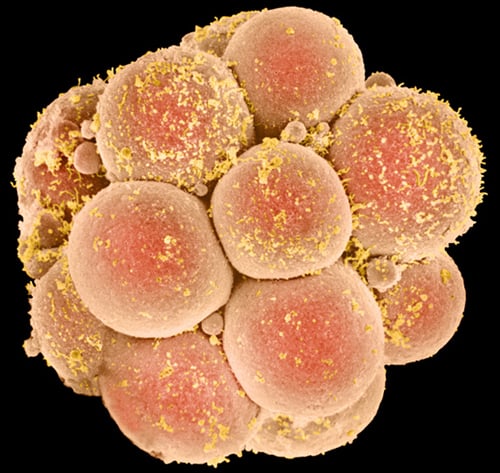
Around four days following fertilization, fluid begins to collect within the morula (see You are 2 Weeks and 3 Days).
This creates a separate outer cell layer, one cell thick that
encapsulates an inner mass of cells. The inner layer will become the
embryo, and the outer layer the placenta (see You are 4 Weeks and 6 Days). The whole structure now consists of approximately 58 cells and is termed the “blastocyst.”
The blastocyst spends
several days within the cavity of the uterus before implanting. The
morula had an impenetrable outer surface as it traveled, but this
disappears as the blastocyst prepares for implantation.
… Mom
| Q: |
Why are people so interested in whether I’ve conceived?
|
| A: |
I certainly found that once I’d told people I was trying to
have a baby, they were inordinately interested in the process. It was
difficult, especially in the week when I was waiting to find out if I’d
conceived. The best way to deal with it is to respond by saying that
you’ll let people know if there’s news. If you’re struggling to
conceive, telling people you’re having difficulties should help stop
them from asking.
|
… Health
Fertility: The alternative approach
It’s not as
clear whether acupuncture can improve fertility in couples not
undergoing treatment, but it is thought to improve male fertility by
improving sperm health and reducing stress, a factor that can impede the
chances of conception.
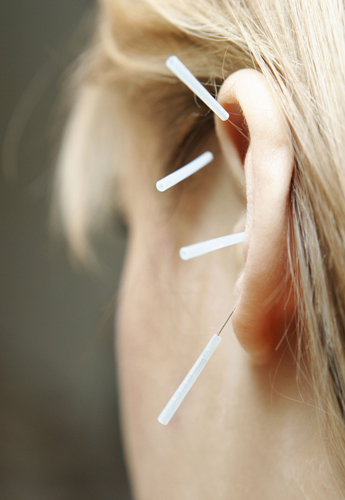
If you’re having difficulty conceiving,
or just want to improve your chances, consider using a complementary
therapy. Always inform the practitioner that you might be pregnant.
Reflexology
works by manipulating pressure points in the feet to improve energy
flow to specific parts of the body. While there is plenty of anecdotal
evidence that reflexology helps conception, this isn’t currently backed
up by scientific research. However, it may help relieve stress, which
can be a factor in couples who have problems conceiving.
Acupuncture (see image)
works on the principle that problems such as infertility are caused by
blockages in the body’s energy flow or “qi.” By inserting tiny needles
into energy points that are linked to the reproductive organs, the flow
is restored. In 2008, after reviewing seven studies of more than 1,300
women having fertility treatment, researchers concluded that acupuncture
given around the time of embryo transfer increases the chances of
pregnancy.
You are 2 Weeks and 5 Days 261 days to go…
While playing the waiting game, you may want to consider how you’d feel if there are two fertilized embryos waiting to implant!
What’s happening inside
This is an embryo at the blastocyst stage, five days after
fertilization. It is seen hatching from the shell that originally
surrounded the unfertilized egg. At this stage, the blastocyst has moved
into the uterus and is preparing to implant.
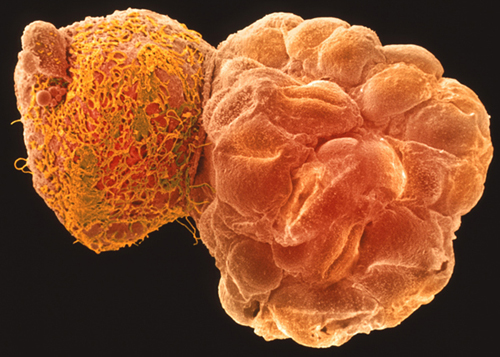
Have you conceived, and might it be twins? Twins can be nonidentical or identical and each type of twins is conceived differently.
Nonidentical
(dizygotic) twins are the result of two separate eggs being fertilized
by separate sperm. They may also occur as a result of IVF if two embryos are placed in the uterus.
Identical (monozygotic)
twins occur when a single egg is fertilized by a single sperm and
divides into two embryos. This split can occur at any stage up to nine
days after fertilization and its timing is critical to the way the
placenta(s) and amniotic sac(s) are formed. If the zygote (see You are 2 Weeks and 3 Days)
splits within the first three days, two separate placentas and amniotic
sacs develop. If the split occurs at blastocyst stage (see image),
four to nine days after fertilization, the fetuses will share a
placenta but have separate sacs; when the split occurs after day nine,
the fetuses will share a placenta and a sac.
Having nonidentical
(fraternal) twins, which come from two separate fertilized eggs, depends
a lot on family history. It’s often said that twins skip a generation,
which isn’t quite true. In fact, your chances of having twins are simply
higher if you have a close relative with twins, but twins never become
inevitable, however many members of your family have them.
Family history
is most relevant with nonidentical twins, and when the twins are on the
mother’s side. This makes sense because this kind of twin relies on a
woman releasing two eggs in any one cycle (see as a matter of fact),
which may be hereditary. However, for reasons that aren’t clear, a
family history of twins on the father’s side can be important too. It
may be that the male of the species can carry a gene which makes his
daughter release more than one egg at a time when she ovulates.
The lining of the uterus,
when fertilization occurs, becomes secretory to nourish an embryo. The
lining prepares itself in the same way, no matter how many embryos
implant.
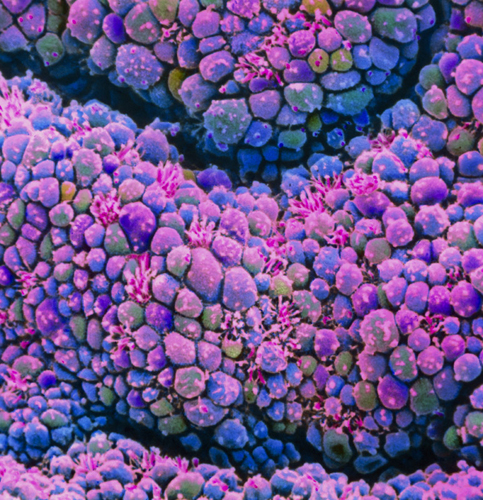
The lost twin
Twin conceptions may be more
common than they appear. Without knowing it, some women miscarry one
twin in early pregnancy. It is sometimes possible to have symptoms of a
miscarriage, yet, confusingly, the pregnancy then appears to continue
until term, culminating in the birth of a completely normal singleton
baby.
Nobody is quite sure
how often this happens, or why. While one in every 31 births in the US
today is a twin birth, research using scans in very early pregnancy
suggests that at conception the figure is much higher. Some experts
believe that 15 percent of all births may start off as twins. Their loss
could simply be nature’s way of dealing with imperfections.
The odds of having identical twins are about 3.5 in 1000.
Some estimate that the chances of having twins after fertility-enhancing treatment is as high as 1 in 38.